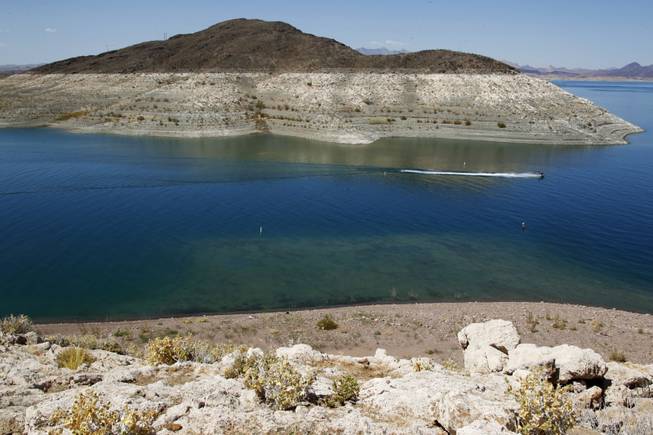Saturday, Aug. 3, 2013 | 2 a.m.
Federal water experts and climatologists on Friday issued a grim report on the future of the Colorado River watershed to lawmakers from around the West in Las Vegas.
But perhaps no other state has as much at stake in the river's declining conditions as Nevada.
Managing the Colorado River will cost billions of dollars over the next 50 years, according to the panel of experts at the Council of State Governments West conference.
Demand for the Colorado River’s water exceeds supply, meaning governments will likely have to spend from $4 billion to $7 billion to ensure a stable water supply in Nevada, Arizona, California, Utah, Colorado, Wyoming and New Mexico.
Federal government experts see population growth in these states as increasing demand for water. The billions of dollars would be put toward increasing supply — through re-use, importation, or desalination of water — and decreasing demand through conservation in residences, industry and agriculture.
Although no Nevada legislators attended the talk Friday, the long-term consequences of doing nothing could have a severe impact on Southern Nevada.
The status quo scenario predicts a 40 percent chance Lake Mead’s elevation falls below 1,000 feet on any given month between 2041 and 2060.
Why does that matter?
The Southern Nevada Water Authority cannot pull water out of Lake Mead when the water level drops below 1,000 feet, said Ken Nowak, a hydraulic engineer with the Bureau of Reclamation.
Granted, that’s nearly 30 years away, but the status quo leaves Southern Nevada especially vulnerable. The region gets 90 percent of its water from there, said Doug Bennett, conservation manager with the Southern Nevada Water Authority.
“One of our threats is the lack of diversity in our water portfolio,” Bennett said.
If it were a financial asset, the Colorado River would be in the red.
The water authority is drilling a third straw into Lake Mead to keep access to water open should the lake’s water level continue to drop.
Western legislators took a trip to the lake, where they saw what Nowak called the “bathtub ring” about 100 feet above the current level of the lake.
The water authority is also planning to build a pipeline from Las Vegas to Ely as a means to gain more water and, as Bennett said, diversify the region’s water portfolio.
But neighbors in Utah are vigorously contesting the move, illustrating how water management in the Colorado River basin can spur legal and political spats that add to the cost and complexity of dealing with water supply and demand.
Legislators also heard about the effects of climate change on water supply.
“Wetter winters and drier springs, summers and falls,” said Kelly Redmond, deputy director and regional climatologist at the Western Regional Climate Center. “Basically around the Earth, the wet get wetter and the dry get drier.”
Dry areas in the West might see less snowfall, meaning levels in the Colorado River could drop.
But the immediate actions to mitigate such consequences along the Colorado aren’t clear at a state level.
Regionally, the most likely next step is a rate increase from the Southern Nevada Water Authority to help it continue to pay off debt for its tremendous growth during the past decade.


Join the Discussion:
Check this out for a full explanation of our conversion to the LiveFyre commenting system and instructions on how to sign up for an account.
Full comments policy